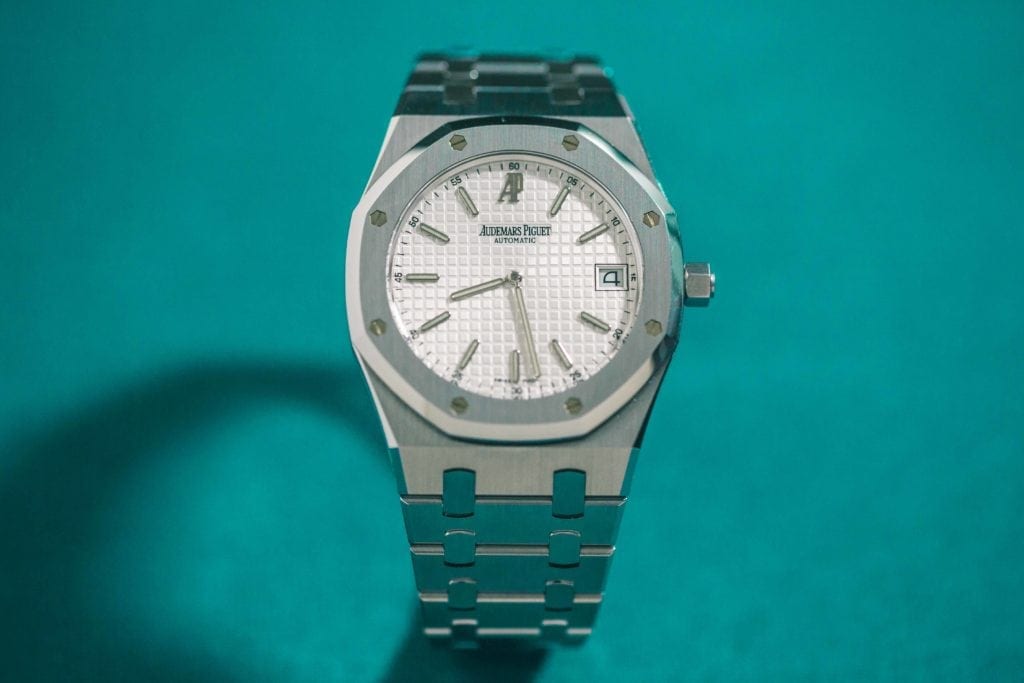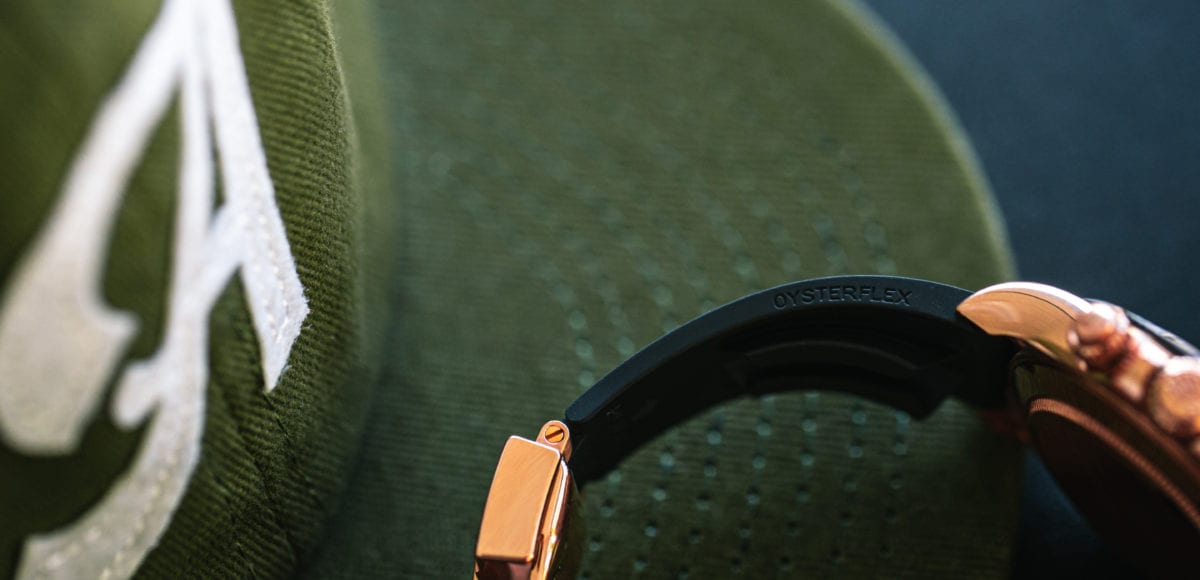Rolex has been a leader in the watch industry since the early days of the company. One of their first achievements came all the way back in 1910. That year, they created the first wristwatch to receive chronometer certification. Since then, Rolex’s accomplishments have spanned beyond industry accolades and into the realm of groundbreaking innovations. Today, they have built a reputation for the development of proprietary materials exclusive to the brand. One of these came back in 2015 with the introduction of an all-new material called Oysterflex.
Historical Context: The Precursors to Oysterflex
Since the dawn of the wristwatch, watchmakers have offered two standard strap options: leather bands and metal bracelets. In fact, it was not until relatively recently that brands began to experiment with new materials for the strap. It started with a larger shift in the industry. The 1970s marked the birth of a new watch category: the luxury sport watch. The model that established this new breed of watch was Gerald Genta’s Audemars Piguet Royal Oak. This watch did feature a standard metal bracelet. However, the concept of the luxury sport watch at large introduced a new idea to the industry, one that blurred the lines between the dress watch and the tool watch.

A decade later, Hublot took the concept of the luxury sport watch a step further. After three years of research and development, they debuted the first watch with a rubber strap. Today, these straps have become synonymous with the brand and completely commonplace on watches from a number of different makers. Still, not every watchmaker was quick to adopt such an avant-garde idea. Rolex, a brand deeply rooted in tradition, was among those who seemed resistant to the trend. That was until it seemed rubber straps were here to say. Over 30 years later, Rolex gave in, but in typical Rolex fashion, they did so on their own terms. Standard rubber wasn’t enough. They had to up the ante by revealing their own proprietary material: Oysterflex.
Baselworld 2015: The Debut of Oysterflex
At Baselworld in 2015, Rolex unveiled their first model to feature a rubber style strap. For the occasion, they selected the Yacht-Master. First, let’s take a moment to consider their model of choice. The Yacht-Master family combines both form and function. While not quite as robust as the Submariner, it features similar capabilities of water resistance and a bidirectional rotating bezel. In contrast to its technical features, the Yacht-Master line incorporates precious metals, like platinum and gold, with stainless steel. This ultimately enhances the luxury aspect of its look and feel. With this balance of design and aesthetic in mind, the Yacht-Master has the essence of the luxury sport watch. Thus, it seems Rolex made a careful and thoughtful model selection to launch their first rubber strap.

With the debut of Oysterflex, Rolex pushed the boundaries of luxury and functionality even further. It maintained its typical 100 meters of water resistance. For the bezel, they chose a matte black Cerachrom and for the case, Everose. Still the pièce de résistance is the brand new Oysterflex strap.
Here, Rolex has combined the best of the rubber strap and the traditional bracelet. It provides the comfort and hypoallergenic properties of rubber straps and the shape-retention and durability of metal bracelets. To achieve this, Rolex encased inserts made of a titanium and nickel alloy within elastomer (a combination of elastic and polymer, or more simply rubber). The metal inserts are not just there to help securely connect the clasp, strap, and case. Their strategic placement also helps the strap to form naturally to the curvature of the wrist. This creates optimal comfort and stability during wear. The result is obviously quite technical, and the enhanced wearability in turn enhanced the luxury aspect. Once more, Rolex has truly embodied the spirit of the luxury sport watch in their own unique way.
Beyond the Yacht-Master: The Evolution of Oysterflex in the Rolex Catalog

After the success of the Yacht-Master, Rolex introduced Oysterflex into another line two years later. At Baselworld in 2017, the brand replaced leather straps with Oysterflex in the Daytona collection. In addition, Rolex added three variations of precious metals: white gold, yellow gold, and Everose. The combination of these precious metals and Oysterflex seems to be the balance Rolex is going for. To date, the brand has yet to pair an Oysterflex strap with a stainless steel model. However, it’ll be interesting to see how their implementation of the material continues to evolve in the years to come.
Get More Articles Like This in Your Inbox
We're constantly creating great content like this. So, why not get it delivered directly to your inbox? By subscribing you agree to our Privacy Policy but you can unsubscribe at any time.






